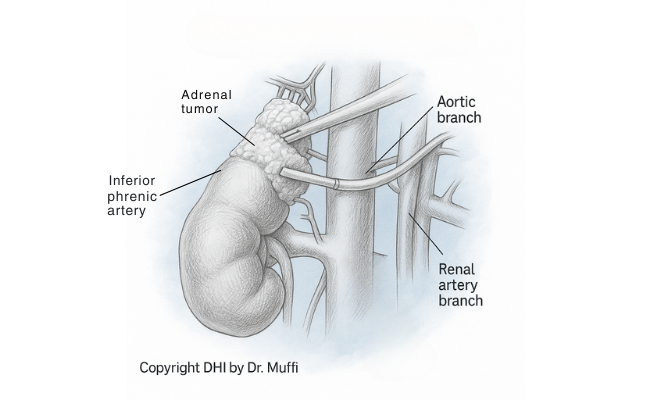Adrenalectomy
Introduction | Common Conditions | Procedure

What Is an Adrenalectomy?
Adrenalectomy is a surgical procedure to remove one or both of your adrenal glands — small, triangular glands located above each kidney. These glands produce important hormones like cortisol, adrenaline, and aldosterone, which help regulate blood pressure, metabolism, and the body’s stress response.
While not commonly needed, adrenalectomy can be a crucial step in managing certain hormone-related or metabolic conditions — especially when a tumor or overactive adrenal gland is affecting your health or weight.
Why Might You Need This Surgery?
Sometimes, an adrenal gland makes too much hormone, which can lead to:
- Sudden weight gain
- High blood pressure
- High blood sugar or diabetes
- Muscle weakness or feeling tired all the time
- Headaches, anxiety, or fast heartbeat
This may happen because of a tumor (usually non-cancerous) in the adrenal gland. Removing the gland helps fix the hormone problem and improve your health.
How Is Adrenalectomy Performed?
Adrenalectomy is typically done using minimally invasive laparoscopic or robotic-assisted techniques, which means:
- Smaller incisions
- Less pain and faster recovery
- Shorter hospital stay (usually 1–2 days)
If only one gland is removed, the remaining gland usually takes over hormone production. In rare cases where both glands are removed, lifelong hormone replacement therapy is necessary.
What exactly does the adrenal gland do?
The adrenal glands produce hormones that help control blood pressure, metabolism, stress response, salt levels, and more. You have two glands—one above each kidney.
Will I need medication after surgery?
If one gland is removed, the other often compensates. If both are removed, or if the removed gland was overactive, lifelong hormone replacement therapy is usually needed.
How long will it take to recover?
- Most patients return home within 24–48 hours after surgery.
- Full recovery takes about 2–3 weeks for most.
- Hormone levels are monitored carefully after surgery.
- Some patients feel significant improvements in blood pressure, blood sugar, and weight within weeks.




